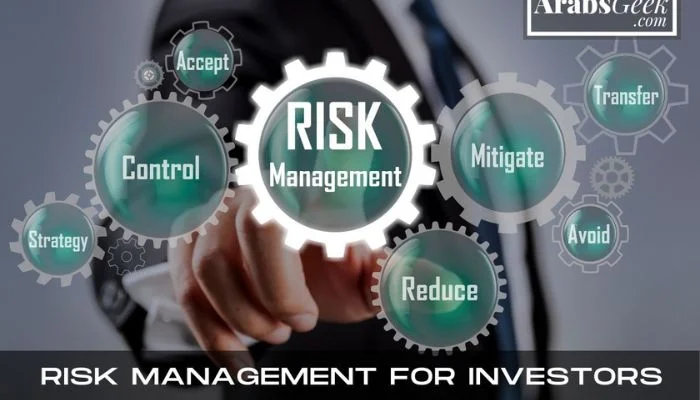Introduction to Risk Management for Investors
Investing is an essential part of building wealth and achieving financial goals. However, with the potential for high returns comes a level of risk. To be a successful investor, understanding and managing these risks is crucial. In this article, we’ll discuss the different types of investment risks, risk management strategies, the importance of risk management, and common mistakes to avoid.
Table of Contents
Types of Investment Risks
Market Risk
Market risk, also known as systematic risk, is the potential for an investment to lose value due to overall market fluctuations. This type of risk affects all investments and cannot be eliminated through diversification.
For any business enquiry, you can contact us at ArabsGeek.com
For more of such financial articles, Consider visiting our sister website at EntrepreneursPilot.com
Credit Risk | Risk Management For Investors
Credit risk is the possibility that a borrower will default on their financial obligations, causing losses for the lender or investor. This type of risk is prevalent in fixed-income securities like bonds and corporate debt.
Liquidity Risk
Liquidity risk arises when an investor cannot quickly buy or sell an investment without significantly affecting its price. This type of risk is more common in thinly traded or illiquid markets.
Inflation Risk
Inflation risk is the possibility that the purchasing power of an investment will be eroded over time due to rising prices. This risk is particularly relevant for fixed-income investments, as their returns may not keep up with inflation.
Currency Risk | Risk Management For Investors
Currency risk, or exchange rate risk, occurs when fluctuations in foreign exchange rates affect the value of investments denominated in foreign currencies.
Risk Management Strategies
Diversification
Diversification is a key risk management strategy that involves spreading investments across various asset classes, sectors, and geographies to reduce the impact of a poor-performing investment on the overall portfolio.
Asset Allocation
Asset allocation is the process of dividing investments among different asset classes, such as stocks, bonds, and cash, based on an investor’s risk tolerance, time horizon, and financial goals.
Geographic Diversification | Risk Management For Investors
Geographic diversification reduces the risk associated with investing in a single country or region by spreading investments across different countries and regions.
Sector Diversification
Sector diversification involves spreading investments across various industry sectors to minimize the impact of sector-specific risks.
Hedging | Risk Management For Investors
Hedging is a strategy used to protect investments from potential losses by taking an offsetting position in a related security or financial instrument.
Futures and Options
Futures and options contracts can be used to hedge against market risks, such as price fluctuations in stocks, bonds, or commodities.
Currency Hedging | Risk Management For Investors
Currency hedging involves using financial instruments, such as forward contracts or currency options, to manage the risk of currency fluctuations on foreign investments.
Risk Tolerance Assessment
Understanding your risk tolerance is crucial for building an investment strategy that aligns with your comfort level. Risk tolerance varies depending on factors such as age, financial goals, and investment experience.
Time Horizon
Your investment time horizon, or the length of time you expect to hold your investments, plays a significant role in determining your risk tolerance. Generally, investors with longer time horizons can afford to take on more risk for potentially higher returns.
Regular Portfolio Review | Risk Management For Investors
Regularly reviewing and rebalancing your portfolio ensures that your asset allocation remains aligned with your risk tolerance and financial goals.
Importance of Risk Management in Investing
Maintaining Financial Goals
Effective risk management helps investors maintain their financial goals by minimizing the impact of adverse market events on their investments.
Protecting Investments from Economic Fluctuations
By managing risk, investors can protect their investments from the negative effects of economic fluctuations, such as recessions and market downturns.
Managing Emotional Biases
Investors are prone to emotional biases that can lead to poor decision-making. Risk management helps investors maintain a disciplined approach to investing, reducing the influence of emotions on their decisions.
Common Mistakes in Risk Management
Overconfidence
Overconfidence can lead to excessive risk-taking and a lack of diversification in a portfolio. To avoid this pitfall, investors should maintain a balanced and diversified portfolio.
Ignoring Correlation | Risk Management For Investors
Investors should consider the correlation between their investments to ensure they are not overly exposed to a single risk factor. A well-diversified portfolio should include investments with low or negative correlations.
Relying on Past Performance
Past performance is not indicative of future results. Investors should focus on their investment strategy and risk management, rather than relying solely on past performance.
Conclusion | Risk Management For Investors
Risk management is a crucial aspect of investing that helps protect your investments and maintain your financial goals. By understanding different types of risks, implementing risk management strategies such as diversification and hedging, and regularly reviewing your portfolio, you can reduce the potential impact of adverse market events on your investments.
Frequently Asked Questions (FAQs)
Q1: What is risk management in investing?
Risk management in investing refers to the process of identifying, assessing, and mitigating the various risks associated with investments to protect your portfolio and achieve your financial goals.
Q2: What are some common types of investment risks?
Common types of investment risks include market risk, credit risk, liquidity risk, inflation risk, and currency risk.
Q3: What is diversification and why is it important?
Diversification is the process of spreading investments across various asset classes, sectors, and geographies to reduce the impact of a poor-performing investment on the overall portfolio. It helps to mitigate risk and protect investments from adverse market events.
Q4: How can I determine my risk tolerance?
Risk tolerance varies depending on factors such as age, financial goals, and investment experience. You can determine your risk tolerance by assessing your financial situation, investment goals, and comfort level with potential losses.
Q5: What are some common mistakes in risk management?
Common mistakes in risk management include overconfidence, ignoring correlation, and relying on past performance. To avoid these pitfalls, investors should maintain a balanced and diversified portfolio, consider the correlation between their investments, and focus on their investment strategy and risk management.











